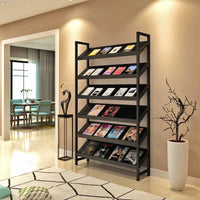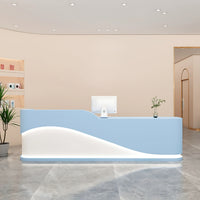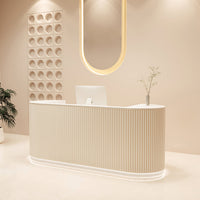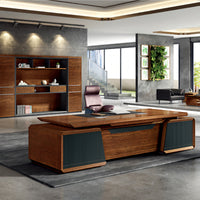Wall-Mounted vs Freestanding Storage Cabinets: Pros and Cons
kaguyasuContent Menu
● What Are Wall-Mounted Storage Cabinets?
>> Advantages of Wall-Mounted Cabinets
>> Disadvantages of Wall-Mounted Cabinets
● What Are Freestanding Storage Cabinets?
>> Advantages of Freestanding Cabinets
>> Disadvantages of Freestanding Cabinets
● Comparing Wall-Mounted and Freestanding Cabinets: Key Factors
● Ideal Uses for Wall-Mounted Cabinets
● Ideal Uses for Freestanding Cabinets
● Installation Considerations
>> Wall-Mounted Cabinets
>> Freestanding Cabinets
● Maintenance and Longevity
● Environmental and Accessibility Factors
● Conclusion: Which Cabinet Type Should You Choose?
● Frequently Asked Questions (FAQs)
When deciding on storage solutions for homes, offices, or garages, two popular options stand out: wall-mounted and freestanding storage cabinets. Each type has unique advantages and disadvantages that affect space utilization, installation, flexibility, and aesthetics. This article explores these two cabinet styles in depth, helping you choose the best fit for your needs.

What Are Wall-Mounted Storage Cabinets?
Wall-mounted storage cabinets are fixed directly onto walls, suspending storage off the floor. This design creates a clean, streamlined appearance and frees up valuable floor space.
Advantages of Wall-Mounted Cabinets
- Maximized Floor Space
Because they do not touch the ground, wall-mounted cabinets leave the floor area open, making rooms feel larger and less cluttered. This is especially beneficial in small or crowded spaces such as compact garages or bathrooms.
- Ease of Cleaning
Without legs or a base, cleaning underneath these cabinets is effortless. Dust and debris do not accumulate in hard-to-reach spots, simplifying maintenance.
- Protection from Floor Damage
Items stored in wall-mounted cabinets are less vulnerable to water damage or spills that may occur on the floor, which is an important consideration in areas prone to moisture.
- Customizable Height
These cabinets can be installed at any height, allowing easy access tailored to user needs, enhancing ergonomics.
- Modern Aesthetic
Wall-mounted units often provide a sleek, contemporary look that complements minimalist and modern interior designs.
Disadvantages of Wall-Mounted Cabinets
- Permanent Installation
Once installed, moving these cabinets is difficult. Rearranging a room or relocating the cabinet requires uninstalling and reinstalling, which can be labor-intensive.
- Weight Limitations
The load capacity depends on the wall's structural integrity. Heavy items may not be suitable for wall-mounted storage unless the wall is reinforced.
- Installation Complexity and Cost
Professional installation is often necessary to ensure secure mounting, increasing upfront costs compared to freestanding options.
What Are Freestanding Storage Cabinets?
Freestanding cabinets are standalone units placed directly on the floor. They can be moved or rearranged without much effort and come in a variety of sizes and styles.
Advantages of Freestanding Cabinets
- Flexibility and Mobility
Freestanding cabinets can be relocated easily, making them ideal for renters or those who frequently redecorate or move.
- Higher Weight Capacity
These cabinets can support heavier items since they rest on the floor, making them suitable for bulky equipment or large storage needs.
- No Wall Dependency
They do not require wall support, so they can be placed anywhere in a room, regardless of wall strength or condition.
- Variety and Accessibility
Freestanding cabinets come in many designs, sizes, and materials, offering more options to suit different tastes and functional requirements.
- Lower Initial Installation Cost
Since no mounting is required, freestanding cabinets generally cost less upfront and can be set up without professional help.
Disadvantages of Freestanding Cabinets
- Takes Up Floor Space
Because they occupy floor area, freestanding cabinets can make a room feel smaller and more crowded, which is a drawback in limited spaces.
- Cleaning Challenges
The base of these cabinets can collect dust and dirt, making cleaning underneath more difficult compared to wall-mounted units.
- Potential for Damage
Being on the floor exposes these cabinets and their contents to potential water damage or spills.
- Less Sleek Appearance
Freestanding units may not provide the same modern, minimalist aesthetic as wall-mounted options.
Comparing Wall-Mounted and Freestanding Cabinets: Key Factors
| Feature | Wall-Mounted Cabinets | Freestanding Cabinets |
|---|---|---|
| Space Efficiency | Saves floor space, ideal for small areas | Occupies floor space, can feel bulky |
| Installation | Requires secure wall mounting, often professional | Easy to place, no installation needed |
| Mobility | Fixed in place, difficult to move | Easily movable and rearranged |
| Weight Capacity | Limited by wall strength | Can hold heavier items |
| Cleaning | Easy to clean underneath | Harder to clean under base |
| Cost | Higher upfront cost including installation | Generally lower upfront cost |
| Aesthetic | Modern, sleek look | Traditional or varied styles |
| Durability | Fixed and stable | Stable but can be prone to floor damage |
Ideal Uses for Wall-Mounted Cabinets
Wall-mounted cabinets excel in environments where floor space is at a premium and a clean, modern look is desired. Examples include:
- Small Garages where maximizing floor space for vehicles or work areas is critical.
- Bathrooms where space is limited and easy cleaning is a priority.
- Kitchens for storing utensils and appliances off countertops and floors.
- Closets to increase hanging space and keep floors clear for shoes or baskets.
- Offices to maintain a clutter-free workspace with accessible storage.
Ideal Uses for Freestanding Cabinets
Freestanding cabinets are best suited for situations requiring flexibility or heavy-duty storage:
- Workshops and Garages where bulky tools and equipment need to be stored.
- Living Rooms or Bedrooms where furniture style and mobility are important.
- Rental Properties where tenants may want to take storage with them.
- Temporary or Changing Storage Needs such as seasonal items or frequently rearranged spaces.
Installation Considerations
Wall-Mounted Cabinets
- Must be anchored to studs or solid wall material for safety.
- May require professional installation to ensure stability.
- Height and placement should be planned carefully to optimize accessibility.
Freestanding Cabinets
- No special installation required; simply place on a level floor.
- Can be moved or repositioned without tools.
- Floor protection pads may be needed to prevent scratches.
Maintenance and Longevity
- Wall-mounted cabinets generally have fewer issues with dirt accumulation due to their elevated design and tend to last longer if properly installed.
- Freestanding cabinets may require more frequent cleaning underneath and can suffer damage from moisture or uneven floors but offer the advantage of easy replacement or repair.
Environmental and Accessibility Factors
- Wall-mounted cabinets can improve accessibility by leaving floor space clear for wheelchair users or those with mobility aids.
- Freestanding cabinets may obstruct pathways or require more careful placement for accessibility.
Conclusion: Which Cabinet Type Should You Choose?
Choosing between wall-mounted and freestanding storage cabinets depends on your specific needs:
- Opt for wall-mounted cabinets if you want to maximize floor space, enjoy a modern aesthetic, and don't mind a fixed installation.
- Choose freestanding cabinets if you value flexibility, need to store heavy items, or prefer a lower upfront cost without installation hassle.
Both options have their place, and understanding their pros and cons ensures you select the best storage solution for your space and lifestyle.
Frequently Asked Questions (FAQs)
1. Can wall-mounted cabinets hold heavy tools or equipment?
Wall-mounted cabinets have weight limits based on wall strength and mounting hardware. For very heavy items, freestanding cabinets are usually safer.
2. Are wall-mounted cabinets more expensive than freestanding ones?
Yes, wall-mounted cabinets often cost more upfront due to installation requirements and hardware.
3. Can I install wall-mounted cabinets myself?
If you have experience with wall anchors and tools, you might. However, professional installation is recommended for safety and durability.
4. Which cabinet type is easier to clean around?
Wall-mounted cabinets are easier to clean under since they leave the floor clear, unlike freestanding cabinets.
5. Are freestanding cabinets suitable for small spaces?
They can be used but may take up valuable floor space, making the area feel more cramped compared to wall-mounted options.

[1] https://www.baygarage.com/post/wall-mounted-vs-freestanding-garage-cabinets-pros-cons
[2] https://patents.google.com/patent/CN2757668Y/zh
[3] https://www.wellfor.com/blogs/buying-guides/how-do-you-choose-between-a-wall-mounted-and-freestanding-medicine-cabinet
[4] https://patents.google.com/patent/CN102871364A/zh
[5] https://www.inspiredclosets.com/learning-center/custom-closets/wall-mounted-vs-floor-mounted-closets-whats-the-difference/
[6] https://patents.google.com/patent/CN109463909A/zh
[7] https://justbathroomware.com.au/blogs/news/wall-mounted-vs-freestanding-bathroom-cabinet
[8] https://wenku.baidu.com/view/f5856d6348d7c1c708a145e2?pcf=2&bfetype=new&bfetype=new
[9] https://cabinetcoatings.com/pros-cons-freestanding-cabinets/
[10] https://patents.google.com/patent/CN111150231A/zh
Hot Tags: China, Global, OEM, private label, manufacturers, factory, suppliers, manufacturing company





















